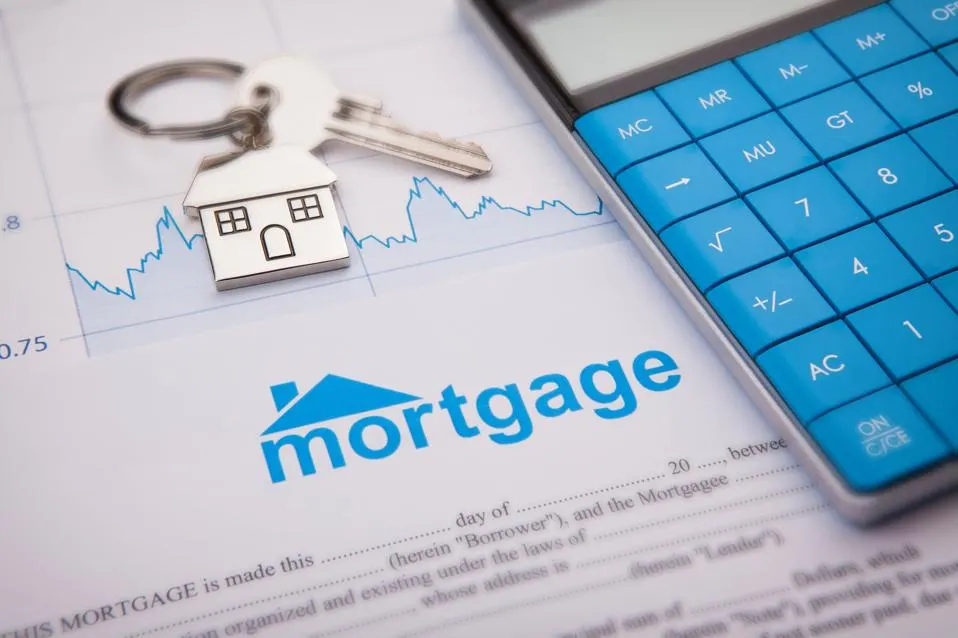Mortgage Principal and Interest Explained: A Complete Guide
Buying a home is one of the most significant financial decisions you’ll ever make — and most people rely on a mortgage to do it. But with so many terms thrown around — like principal, interest, amortization, and monthly payments — it’s easy to get confused.
Understanding the two core components of your mortgage payment—principal and interest—is key to managing your finances, comparing mortgage options, and making informed, long-term decisions.
In this guide, we’ll break down what mortgage principal and interest are, how they work together, and how they affect your monthly payments over time.
What Is a Mortgage?
A mortgage is a loan used to purchase a home or other real estate. When you take out a mortgage, you borrow money from a lender (like a bank or credit union), and in return, you agree to pay it back over time — with interest.
Your monthly mortgage payment typically includes:
Principal: The amount you borrowed
Interest: The cost of borrowing that money
Property taxes (in some cases)
Homeowners insurance (sometimes included in monthly payments)
Mortgage insurance (if applicable)
In this blog, we’ll focus on the two foundational pieces: principal and interest.
What Is Mortgage Principal?
Definition:
The principal is the original amount of money you borrow from a lender when you take out a mortgage.
Example:
Let’s say you buy a home for $500,000 and make a 20% down payment of $100,000. The remaining $400,000 is your mortgage principal.
Over Time:
Each monthly payment you make chips away at this principal balance. Initially, only a small portion of your payment goes toward the principal, but this changes over time.
What Is Mortgage Interest?
Definition:
Interest is what the lender charges you for borrowing money. It’s expressed as a percentage, known as the interest rate.
Example:
If you have a mortgage principal of $400,000 and an interest rate of 5%, you’re being charged 5% annually on the remaining loan balance.
Calculation:
Interest is usually calculated monthly and based on the outstanding principal. So, your first month’s interest would be:
$400,000 × (5% ÷ 12 months) = $1,666.67
Over time, as your principal decreases, the interest portion of your monthly payment also decreases.
How Principal and Interest Work Together
Your mortgage is repaid through monthly payments over a set term, usually 15, 20, or 30 years. These payments are structured using a system called amortization.
What Is Amortization?
Amortization is the process of spreading your loan payments over time so that you pay off both the principal and interest in full by the end of the term.
In the early years of your mortgage:
Most of your payment goes toward interest
A smaller portion goes toward principal
As time goes on:
More of your payment is applied to principal
Less goes to interest

Sample Amortization Breakdown
Let’s use a simplified example:
Mortgage: $400,000
Term: 30 years
Fixed Interest Rate: 5%
Monthly Payment: $2,147 (rounded for simplicity)
Month 1:
Interest: $1,666
Principal: $481
Month 120 (10 years in):
Interest: $1,350
Principal: $797
Month 360 (Final Payment):
Interest: $9
Principal: $2,138
This shows how the composition of your mortgage payment shifts over time.
Why It Matters
Understanding principal and interest helps you:
1. Compare Mortgage Offers
When shopping for a mortgage, knowing how much interest you’ll pay over time can help you choose between fixed and variable rates or between 25-year and 30-year terms.
2. Save Money
Even small changes in interest rates can lead to significant savings or costs over the life of a mortgage. For example, lowering your interest rate by just 1% on a $400,000 loan could save you tens of thousands of dollars.
3. Make Smart Prepayments
If your mortgage allows prepayments (additional payments toward the principal), you can reduce the amount of interest you’ll pay over time and pay off your mortgage faster.
Strategies to Reduce Interest and Pay Down Principal Faster
1. Make Biweekly Payments
Instead of 12 monthly payments, split your payment in half and make it every two weeks. This results in one extra payment per year, reducing your principal and interest over time.
2. Make Lump-Sum Payments
Whenever possible, put bonus income, tax refunds, or extra savings toward your principal. Many lenders allow you to make annual lump-sum prepayments (often up to 10%–20% of the original principal).
3. Choose a Shorter Term
A 15- or 20-year mortgage term has higher monthly payments, but you’ll pay off your principal faster and save significantly on interest.
4. Refinance at a Lower Rate
If interest rates drop, refinancing can help you secure a better rate — reducing the amount you pay in interest and allowing you to pay more toward the principal.
Fixed vs. Variable Interest: How It Impacts You
When choosing a mortgage, you’ll often decide between fixed and variable interest rates.
Fixed-Rate Mortgage:
Interest rate stays the same for the term
Predictable monthly payments
Good for long-term planning
Variable-Rate Mortgage:
Interest rate can change with the market
Monthly payments may fluctuate
Can be cheaper initially, but riskier long-term
Regardless of the type, interest always applies to your remaining principal, so reducing that principal quickly benefits you in either case.
Understanding Your Mortgage Statement
Your monthly mortgage statement typically breaks down:
Principal paid: How much of your payment reduced your loan balance
Interest paid: The cost of borrowing for that month
Remaining balance: Your current loan principal
Reviewing these statements can help you track your progress and decide when to make extra payments.
The Long-Term View
Understanding how principal and interest work can have a powerful impact on your financial future. For many people, their mortgage is their largest debt — and managing it wisely is crucial.
Over 30 Years:
Even at a relatively modest interest rate of 5%, a $400,000 mortgage can cost more than $370,000 in interest over 30 years.
But with smart planning, prepayments, and the right loan structure, you can dramatically reduce the total cost of your home.
Common Questions
1. Can I pay only the principal?
No, not usually. Standard mortgage payments include both principal and interest. However, you can make extra principal payments if your lender allows it.
2. Does paying extra toward principal reduce interest?
Yes. Since interest is calculated on your remaining principal, paying more toward the principal reduces future interest charges.
3. What’s better: lower interest or shorter term?
Both reduce your total cost. A lower interest rate cuts your monthly payment, while a shorter term increases payments but reduces total interest paid.
Final Thoughts
Your mortgage isn’t just a monthly bill — it’s a financial tool. Understanding how principal and interest work together puts you in control. Whether you’re a first-time buyer, a homeowner looking to refinance, or an investor considering options, this knowledge empowers you to make better, smarter financial decisions.
Take time to evaluate your mortgage structure, read your statements carefully, and look for opportunities to reduce your interest and pay down your principal faster. Small changes today can lead to big savings in the future.
Need help finding the right mortgage or understanding your options? Speak with a licensed Pash mortgage agent or financial advisor to explore what works best for your situation.
